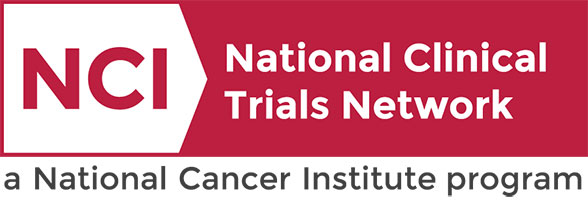Clinical Trials Search at Vanderbilt-Ingram Cancer Center
A Study of Treatment for Medulloblastoma Using Sodium Thiosulfate to Reduce Hearing Loss
This phase III trial tests two hypotheses in patients with low-risk and average-risk medulloblastoma. Medulloblastoma is a type of cancer that occurs in the back of the brain. The term, risk, refers to the chance of the cancer coming back after treatment. Subjects with low-risk medulloblastoma typically have a lower chance of the cancer coming back than subjects with average-risk medulloblastoma. Although treatment for newly diagnosed average-risk and low-risk medulloblastoma is generally effective at treating the cancer, there are still concerns about the side effects of such treatment. Side effects or unintended health conditions that arise due to treatment include learning difficulties, hearing loss or other issues in performing daily activities. Standard therapy for newly diagnosed average-risk or low-risk medulloblastoma includes surgery, radiation therapy, and chemotherapy (including cisplatin). Cisplatin may cause hearing loss as a side effect. In the average-risk medulloblastoma patients, this trial tests whether the addition of sodium thiosulfate (STS) to standard of care chemotherapy and radiation therapy reduces hearing loss. Previous studies with STS have shown that it may help reduce or prevent hearing loss caused by cisplatin. In the low-risk medulloblastoma patients, the study tests whether a less intense therapy (reduced radiation) can provide the same benefits as the more intense therapy. The less intense therapy may cause fewer side effects. Radiation therapy uses high energy x-rays to kill tumor cells and shrink tumors. Cisplatin is in a class of medications known as platinum-containing compounds. It works by killing, stopping or slowing the growth of cancer cells. The overall goals of this study are to see if giving STS along with standard treatment (radiation therapy and chemotherapy) will reduce hearing loss in medulloblastoma patients and to compare the overall outcome of patients with medulloblastoma treated with STS to patients treated without STS on a previous study in order to make sure that survival and recurrence of tumor is not worsened.
Not Available
III
Not Available
NCT05382338
VICC-NTPED23124
Inotuzumab Ozogamicin in Treating Younger Patients with B-Lymphoblastic Lymphoma or Relapsed or Refractory CD22 Positive B Acute Lymphoblastic Leukemia
This phase II trial studies how well inotuzumab ozogamicin works in treating younger patients with B-lymphoblastic lymphoma or CD22 positive B acute lymphoblastic leukemia that has come back (relapsed) or does not respond to treatment (refractory). Inotuzumab ozogamicin is a monoclonal antibody, called inotuzumab, linked to a toxic agent called ozogamicin. Inotuzumab attaches to CD22 positive cancer cells in a targeted way and delivers ozogamicin to kill them.
Not Available
II
Not Available
NCT02981628
COGAALL1621
Neoadjuvant Neratinib for the Treatment of Stage I-III HER2-Mutated Lobular Breast Cancers
This phase II trial tests how well neratinib prior to the primary treatment (neoadjuvant) works in treating patients with stage I-III HER2 mutated lobular breast cancers. Neratinib is in a class of medications called kinase inhibitors. It works by blocking the action of an abnormal protein that signals cancer cells to multiply. This helps slow or stop the spread of cancer cells. Giving neratinib in addition to normal therapy may work better in treating cancer than the endocrine therapy patients would normally receive.
Not Available
II
Not Available
NCT05919108
VICC-NCBRE23172
Vincristine Pharmacokinetics in Infants
Pediatrics
Pediatrics
This pilot trial compares drug exposure levels using a new method for dosing vincristine in infants and young children compared to the standard dosing method based on body surface area (BSA) in older children. Vincristine is an anticancer drug used to a variety of childhood cancers. The doses anticancer drugs in children must be adjusted based on the size of the child because children vary significantly in size (height, weight, and BSA) and ability to metabolize drugs from infancy to adolescence. The dose of most anticancer drugs is adjusted to BSA, which is calculated from a patients weight and height. However, infants and young children have more severe side effects if the BSA is used to calculate their dose, so new dosing models have to be made to safely give anticancer drugs to the youngest patients. This new method uses a BSA-banded approach to determine the dose. Collecting blood samples before and after a dose of the drug will help researchers determine whether this new vincristine dosing method results in equivalent drug levels in the blood over time in infants and young children compared to older children.
Pediatrics
N/A
Borinstein, Scott
NCT05359237
COGPEPN22P1
Disposable Perfusion Phantom for Accurate DCE-MRI Measurement of Pancreatic Cancer Therapy Response
Pancreatic
Pancreatic
This trial tests the use of a disposable perfusion phantom (P4) to decrease errors in calculating the blood flow of a tissue with DCE-MRI. DCE-MRI is used calculate blood flow of various tissues including tumors. Blood flow often serves as a critical indicator showing a disease status. For example, a pancreatic tumor has typically low blood flow, so it can be used as an indicator to identify the presence of a pancreatic tumor. In addition, an effective therapy may result in the increase of blood flow in a pancreatic tumor during the early period of treatment. Therefore, DCE-MRI may be used to determine whether the undergoing therapy is effective or not by measuring the change of blood flow in the pancreatic tumor and may help doctors decide whether to continue the therapy or try a different one. Unfortunately, the measurement of blood flow using DCE-MRI is not accurate. The use of an artificial tissue, named "phantom" or P4, together with a patient may help to reduce errors in DCE-MRI because errors will affect the images of both the patient and the phantom. Because it is known how the blood flow of the phantom appears when no errors are present, the phantom may be used to detect what kinds of errors are present in the image, how many errors are present in the image, and how to remove errors from the image.
Pancreatic
N/A
Xu, Junzhong
NCT04588025
VICCGI2099
Evaluating the Use of Dual Imaging Techniques for Detection of Disease in Patients with Head and Neck Cancer
Phase I
Phase I
This phase I trial evaluates the safety and effectiveness of using two imaging techniques, indium In 111 panitumumab (111In-panitumumab) with single photon emission computed tomography (SPECT)/computed tomography (CT) and panitumumab-IRDye800 fluorescence imaging during surgery (intraoperative), to detect disease in patients with head and neck cancer. 111In-panitumumab is an imaging agent made of a monoclonal antibody that has been labeled with a radioactive molecule called indium In 111. The agent targets and binds to receptors on tumor cells. This allows the cells to be visualized and assessed with SPECT/CT imaging techniques. SPECT is special type of CT scan in which a small amount of a radioactive drug is injected into a vein and a scanner is used to make detailed images of areas inside the body where the radioactive material is taken up by the cells. CT is an imaging technique for examining structures within the body by scanning them with x-rays and using a computer to construct a series of cross-sectional scans along a single axis. Panitumumab-IRDye800 is an imaging agent composed of panitumumab, a monoclonal antibody, linked to a fluorescent dye called IRDye800. Upon administration, panitumumab-IRDye800 targets and binds to receptors on tumor cells. This allows the tumor cells to be detected using fluorescence imaging during surgery. Adding 111In-panitumumab SPECT/CT imaging to intraoperative panitumumab-IRDye800 fluorescence imaging may be more effective at detecting disease in patients with head and neck cancer.
Phase I
I
Rosenthal, Eben
NCT05945875
VICC-EDHAN23204P
111In-Panitumumab for Nodal Staging in Patients with Head and Neck Cancer
Multiple Cancer Types
This phase I trial tests the safety and effectiveness of indium In 111 panitumumab (111In-panitumumab) for identifying the first lymph nodes to which cancer has spread from the primary tumor (sentinel lymph nodes) in patients with head and neck squamous cell carcinoma (HNSCC) undergoing surgery. The most important factor for survival for many cancer types is the presence of cancer that has spread to the lymph nodes (metastasis). Lymph node metastases in patients with head and neck cancer reduce the 5-year survival by half. Sometimes, the disease is too small to be found on clinical and imaging exams before surgery. 111In-panitumumab is in a class of medications called radioimmunoconjugates. It is composed of a radioactive substance (indium In 111) linked to a monoclonal antibody (panitumumab). Panitumumab binds to EGFR receptors, a receptor that is over-expressed on the surface of many tumor cells and plays a role in tumor cell growth. Once 111In-panitumumab binds to tumor cells, it is able to be seen using an imaging technique called single photon emission computed tomography/computed tomography (SPECT/CT). SPECT/CT can be used to make detailed pictures of the inside of the body and to visualize areas where the radioactive drug has been taken up by the cells. Using 111In-panitumumab with SPECT/CT imaging may improve identification of sentinel lymph nodes in patients with head and neck squamous cell cancer undergoing surgery.
Head/Neck,
Phase I
I
Rosenthal, Eben
NCT05901545
VICC-EDHAN23201P
An Imaging Agent (89Zr Panitumumab) with PET/CT for Diagnosing Primary Lesions and/or Metastases in Patients with Head and Neck Squamous Cell Carcinoma
Head/Neck
Head/Neck
This phase I trial evaluates the usefulness of an imaging agent (zirconium Zr 89 panitumumab [89Zr panitumumab]) with positron emission tomography (PET)/computed tomography (CT) for diagnosing primary tumors and/or the spread of disease from where it first started (primary site) to other places in the body (metastasis) in patients with head and neck squamous cell carcinoma. 89Zr panitumumab is an investigational imaging agent that contains a small amount of radiation, which makes it visible on PET scans. PET is an established imaging technique that utilizes small amounts of radioactivity attached to very minimal amounts of tracer, in the case of this research, 89Zr panitumumab, to allow imaging of the function of different cells and organs in the body. CT utilizes x-rays that traverse the body from the outside. CT images provide an exact outline of organs and potential disease tissue where it occurs in patients body. The combined PET/CT scanner is a special type of scanner that allows imaging of both structure (CT) and function (PET) following the injection of 89Zr panitumumab. This 89Zr panitumumab PET/CT may be useful in diagnosis of primary tumors and/or metastasis in patients with head and neck squamous cell carcinoma.
Head/Neck
I
Topf, Michael
NCT05747625
VICCHN2279
An Adjuvant Endocrine-based Therapy Study of Camizestrant (AZD9833) in ER+/HER2- Early Breast Cancer (CAMBRIA-2)
This is a Phase III open-label study to assess if camizestrant improves outcomes compared to
standard adjuvant endocrine therapy for patients with ER+/HER2- early breast cancer with
intermediate-high or high risk for disease recurrence who completed definitive locoregional
therapy (with or without chemotherapy). The planned duration of treatment in either arm
within the study will be 7 years.
standard adjuvant endocrine therapy for patients with ER+/HER2- early breast cancer with
intermediate-high or high risk for disease recurrence who completed definitive locoregional
therapy (with or without chemotherapy). The planned duration of treatment in either arm
within the study will be 7 years.
Not Available
III
Reid, Sonya
NCT05952557
VICC-DTBRE23083
Study of Tinengotinib VS. Physician's Choice a Treatment of Subjects With FGFR-altered in Cholangiocarcinoma
This study is a Phase III, Randomized, Controlled, Global Multicenter Study to Evaluate the
Efficacy and Safety of Oral Tinengotinib versus Physician's Choice in Subjects with
Fibroblast Growth Factor Receptor (FGFR)-altered, Chemotherapy- and FGFR
Inhibitor-Refractory/Relapsed Cholangiocarcinoma
Efficacy and Safety of Oral Tinengotinib versus Physician's Choice in Subjects with
Fibroblast Growth Factor Receptor (FGFR)-altered, Chemotherapy- and FGFR
Inhibitor-Refractory/Relapsed Cholangiocarcinoma
Not Available
III
Heumann, Thatcher
NCT05948475
VICC-DTGIT23271


